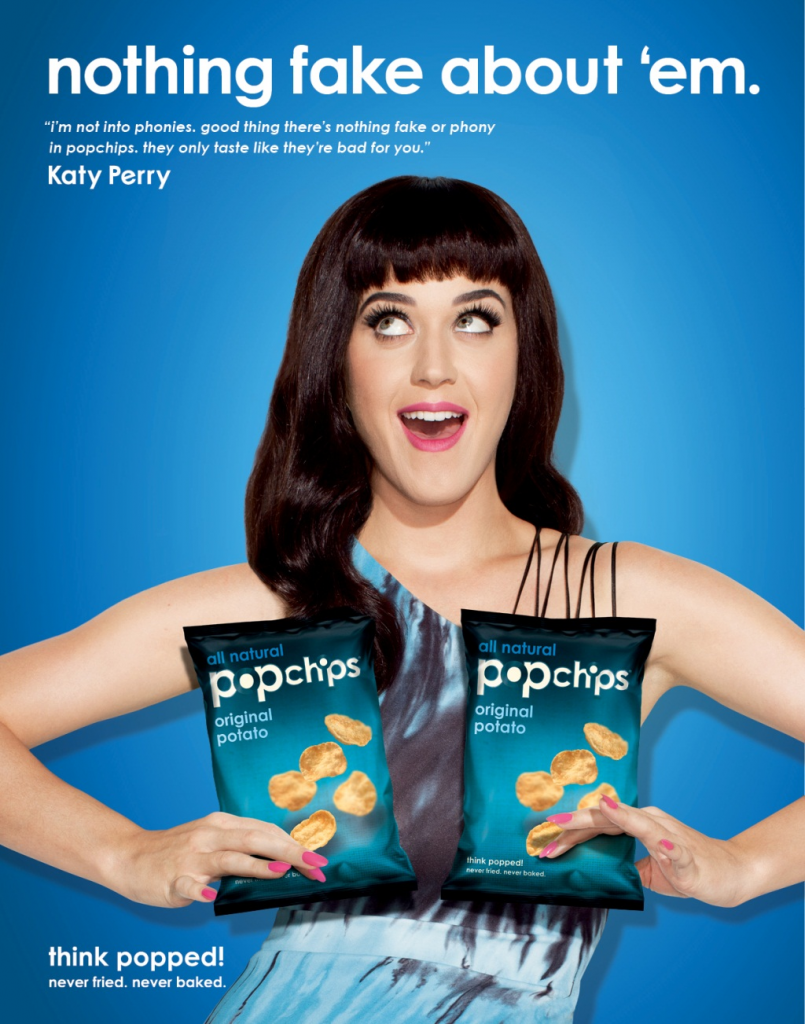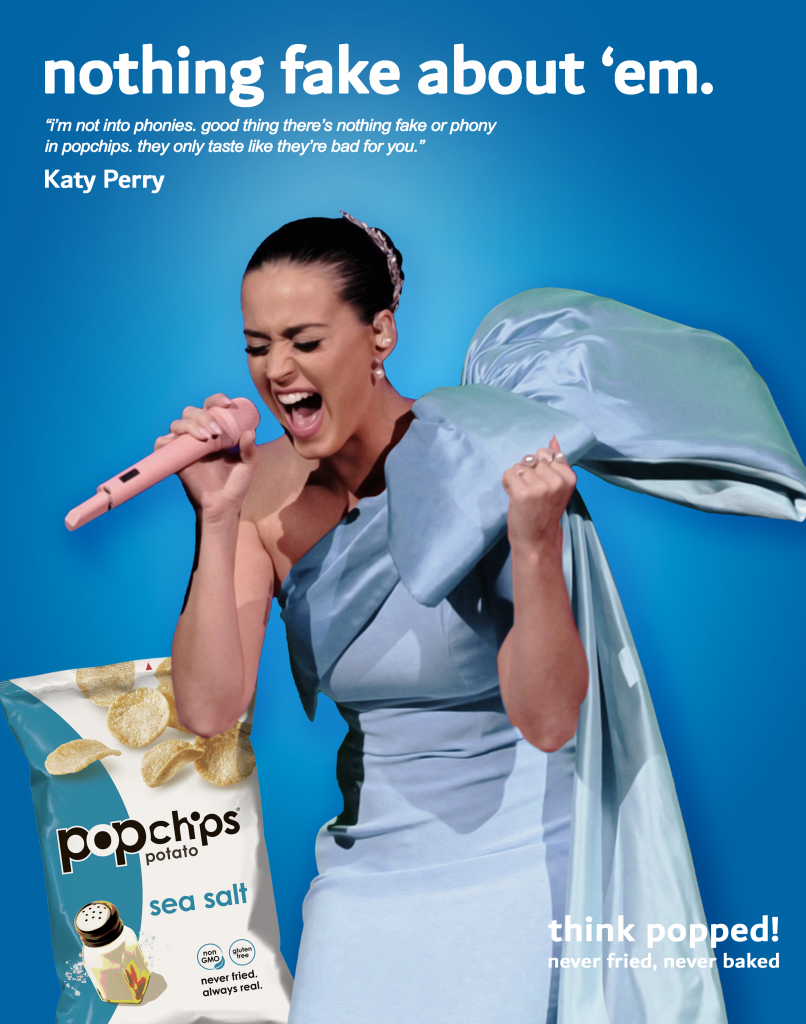
ANALYSIS OF THE ORIGINAL ADVERTISEMENT
After a disastrous racist campaign starring Ashton Kutcher in 2012, Popchips, an all natural potato chip company from San Francisco, was quick to replace the face of their campaign with Katy Perry. Upon first glance, Zambezi, the agency responsible for the creative direction, and ultimately Kutcher’s brownface playing a Bollywood producer named ‘Raj’, had seemingly taken a less offensive route to market their ‘highly-fashionable’ product. It appears that Zambezi had addressed their controversy, and had vetoed the imagery of its casually racialized advertisement style. However, with closer examination, the symbolism depicted in the new campaign with Perry was not an improvement either. Using a sly and roguish language, the main slogan of this campaign was “nothing fake about ’em”. And in the text below, and in much smaller font, the ad incorporates Perry’s quote to clarify exactly what is “not fake”. However, the problem arises when the slogan insinuates another message, suggesting the sexualization of Perry’s body. As Perry holds two bags of chips where her breasts are, and makes a face that shares the same cheeky attitude of the slogan, it is undeniable that the ad is making a metaphoric connection to Perry’s body with the slogan. This message at a deeper level expresses the taboo culture of women modifying their bodies, and in vice-versa, hails those who do not want to or need to modify their bodies. Again, this sentiment can be confirmed by the wording Perry uses in the text below. “I’m not into phonies…”. Then, does this suggest that women who have gotten breast augmentation surgery are deceptive, or even phonies? Hence, representation as such circulates how the media views women, and commercializes their body to promote a specific culture or corporate agenda.

MODIFIED ADVERTISEMENT
The modified advertisement primarily purposes to redirect the slogan to de-objectify Perry’s body found in the original. As I have identified above, the problem of the original advertisement arose when the relationship between the slogan and the suggestive imagery made a connection. Hence, I have chosen to break that connection that becomes empowered upon the sexualization and objectification of Perry’s body, and to redirect that message to her profession which does not specifically target any sexuality/race/gender, and etc. I have chosen a picture of Perry performing so that the slogan’s insinuation is made about the “lip-syncing” culture of pop music, not about the legitimacy of her breasts. This essentially captures the same value and meaning that the original ad wants to portray, but not at the stakes of stigmatizing those who modify their bodies for beauty. Additionally, another large aspect of this modification was to retract the ever-looming male gaze that dominates the advertisement industry. This modification is a testament that not only is sexualizing the female body absolutely unnecessary for advertisement, but also that the same message can be derived when the ‘male gaze’ is understood and identified in one’s own thought process. Simple modifications to how the female body is viewed can go a long way to disseminate the commercialization, stigmatization of how a women is ‘supposed’ to be.
Work completed on Adobe Photoshop.
Sources:
https://www.adweek.com/creativity/katy-perry-brings-popchips-back-brink-new-ads-143395/
https://www.adforum.com/talent/41713525-brian-ford
